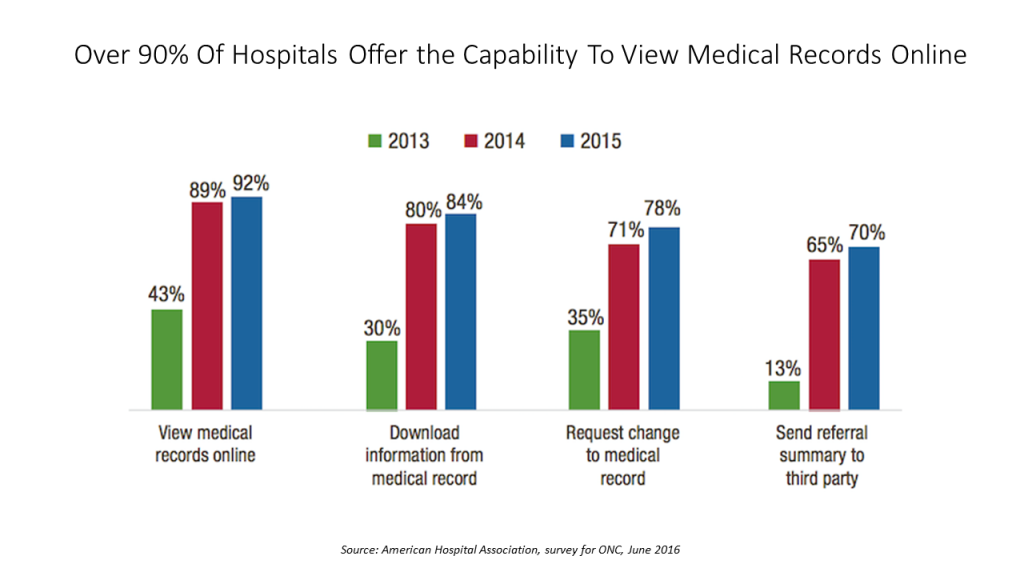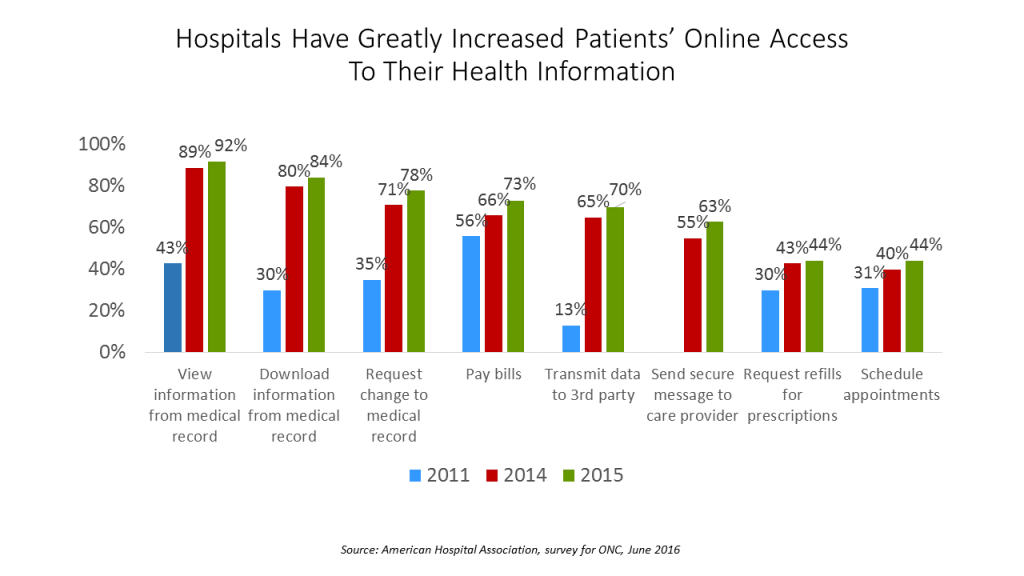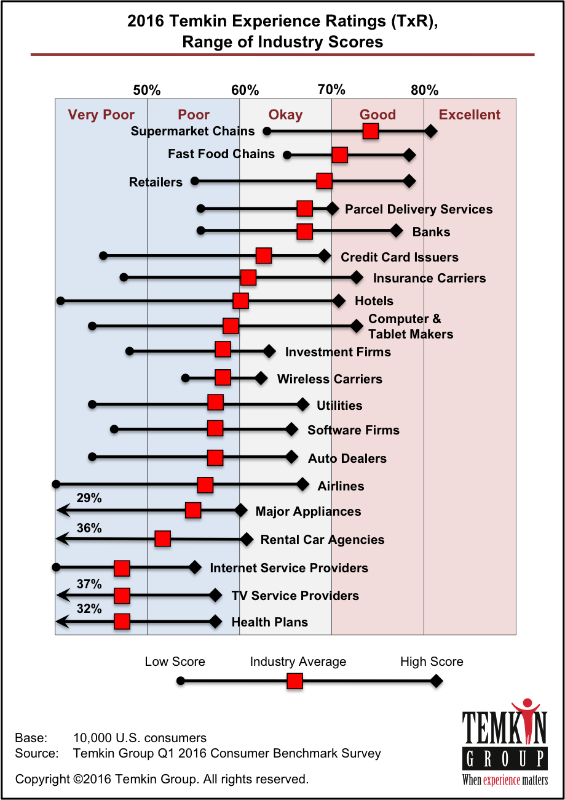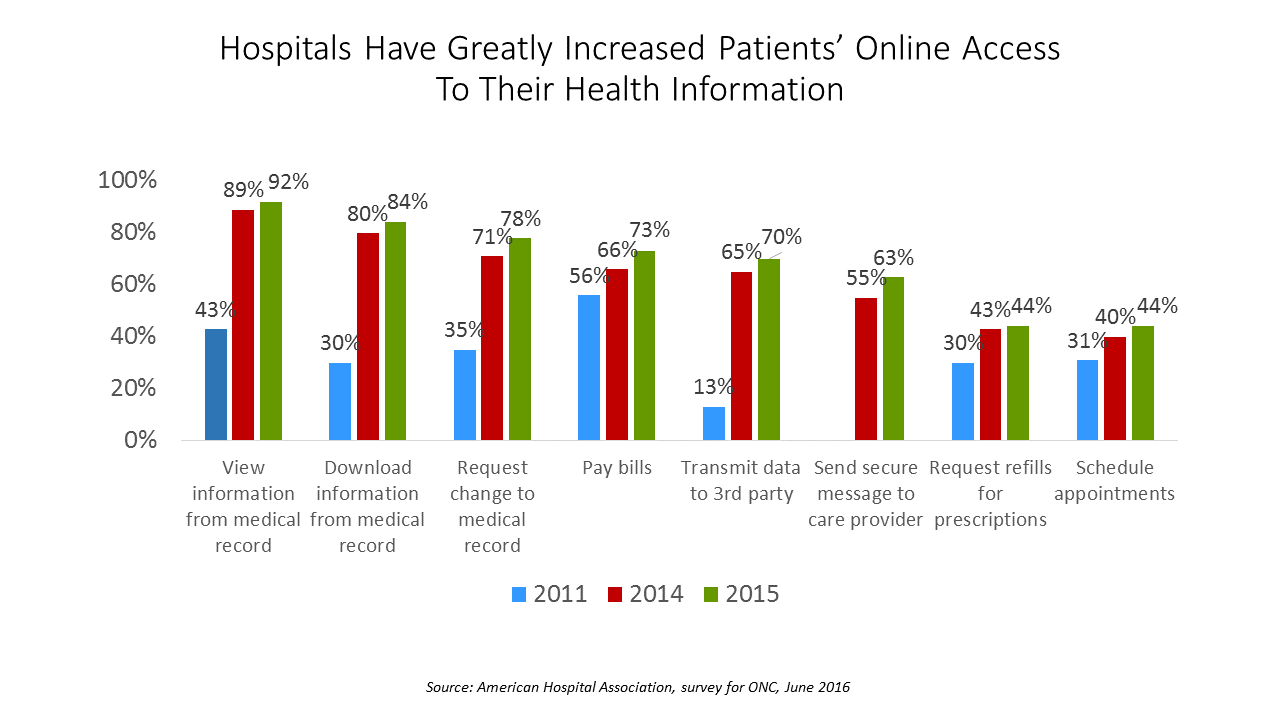
A majority of U.S. hospitals could enable patients digital access to their personal medical records in 2015. Specifically, nearly all US hospitals offer patients the opportunity to view their medical records online in 2015. Eight in 10 hospitals were able to download patient information from their medical record as well as enable patients to request a change to that record, according to a Trendwatch report from the American Hospital Association (AHA), Individuals’ Ability to Electronically Access Their Hospital Medical Records, Perform Key Tasks is Growing.
Over the past several years, hospitals have made significant capital investments in buying, adopting, and effectively using electronic health records (EHRs), largely driven by the availability of financial incentives that were written into the Stimulus Bill — officially, the American Reinvestment and Recovery Act of 2009. By 2015, most hospitals have the ability to do what the HITECH Act’s provisions envisioned as “patient engagement” through sharing patients’ personal health information with them.

Among the various digital tasks that most patients can now take advantage of are viewing information from their medical record, downloading the information, requesting changes to their record, pay medical bills online, transmit data to a third party (say, a specialist or health care advisor), and send their care providers secure emails. Nearly one-half of patients can request refills for prescriptions digitally and schedule appointments online. The availability for patients to perform each of these tasks has significantly grown since 2011, shown in the second bar chart.
The AHA points out that patients may want to communicate with clinicians in-between visits. Secure messaging between patients and providers has grown from 55% to 63% between 2014 and 2015, and patient’s ability to send data they create themselves (say, through digital weight scales or blood glucometers) grew from 14% in 2013 to 37% in 2015.
Health Populi’s Hot Points: In light of these insights, the AHA recommended to ONC that they “look to larger proxies of ‘use’ of electronic health information” in a letter written to Dr. Karen DeSalvo, Acting Assistant Secretary for Health and National Coordinator for Health Information Technology at the US Department of Health and Human Services. “Receipt of information does not always equate to use in clinical care,” AHA continued.
 More people DIYing life digitally, making restaurant reservations on OpenTable, managing money on banking apps, and reviewing experiences on Yelp! More people are also DIYing health, wondering why they can’t manage health tasks as easily as they can other aspects of daily life management.
More people DIYing life digitally, making restaurant reservations on OpenTable, managing money on banking apps, and reviewing experiences on Yelp! More people are also DIYing health, wondering why they can’t manage health tasks as easily as they can other aspects of daily life management.
Note the latest (2016) Temkin Experience Ratings, which measure consumers’ opinions on industry sectors’ ability to delight their customer experience. Consumers rate the best supermarket chains, fast food, retail and banks with the highest scores for customer experiences. See that health plans rank lowest among the industries that Temkin evaluates.
While hospitals are not ranked on this list, the examples of grocers, retail, and banks can offer role models for the health care industry — and certainly, for health plans, which rank as low as internet service providers and cable TV companies for service levels. Hospitals who have the ability to provide patients with their health information, but have low up-take of it, should assess just why so many patients aren’t engaging with their information. That’s the beginning of a journey toward user-centered and experience design, and the health care industry needs a heavy dose of it.





 Thanks to Feedspot for naming this blog, Health Populi, as a
Thanks to Feedspot for naming this blog, Health Populi, as a